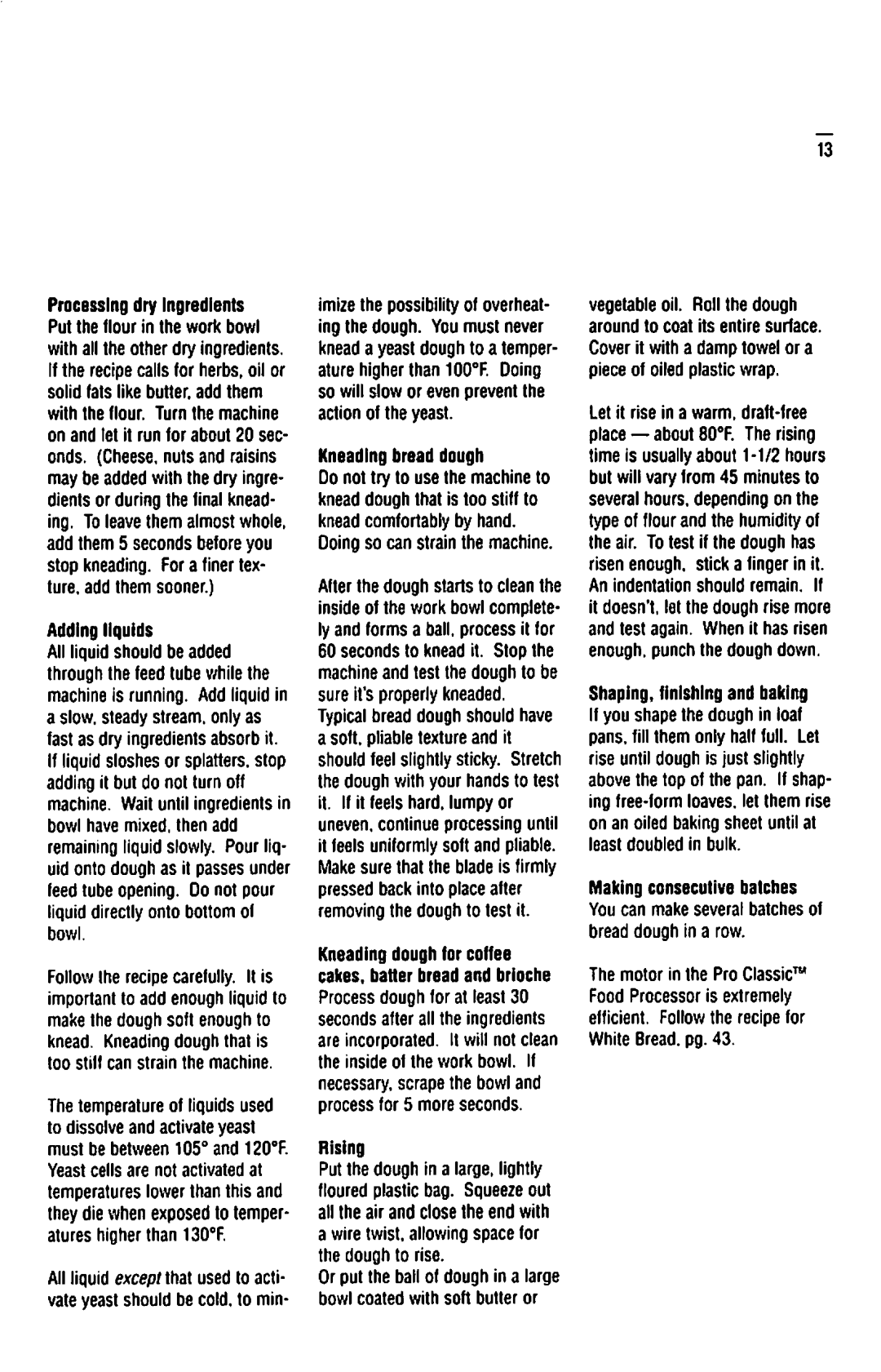DLC-10S specifications
The Cuisinart DLC-10S is a highly regarded food processor that has become a staple in many home kitchens. Its versatile design, advanced technologies, and user-friendly interface make it a top choice for both amateur cooks and professional chefs alike.One of the standout features of the DLC-10S is its robust 7-cup work bowl, which provides ample space for preparing a variety of dishes. Whether you're chopping vegetables, making dough, or slicing cheese, the generous capacity allows for larger batches, saving you time in the kitchen. The work bowl is constructed from durable, BPA-free plastic, ensuring safety and longevity.
Equipped with a powerful 600-watt motor, the Cuisinart DLC-10S can handle tough tasks with ease. The motor's strength enables quick processing, allowing users to efficiently tackle everything from finely chopping herbs to kneading sticky dough. The food processor's stainless steel chopping/mixing blade and a versatile slicing disc ensure precision in food preparation, offering consistent results every time.
Another notable characteristic of the DLC-10S is its ease of use. The food processor features simple control buttons, including on, off, and pulse settings, which provide the user with optimal control over the processing task at hand. Additionally, the blade and disc attachments are easy to install and remove, making transitions between tasks seamless.
Safety is also a priority in the design of the DLC-10S. The device includes a safety lock system that prevents the motor from running unless the work bowl and lid are securely locked in place. This feature gives users peace of mind while using the processor.
The Cuisinart DLC-10S is designed for efficient cleanup as well. The removable parts, including the work bowl and blades, are dishwasher-safe, allowing for effortless maintenance.
Finally, the DLC-10S is backed by Cuisinart's reputation for quality and durability. It comes with a limited three-year warranty, showcasing the commitment to consumers for a reliable and lasting product.
In summary, the Cuisinart DLC-10S food processor is a powerful, versatile, and user-friendly appliance that combines functionality with quality. Its thoughtful design and robust features make it an invaluable tool in any kitchen, streamlining the cooking process and enhancing culinary creativity.

